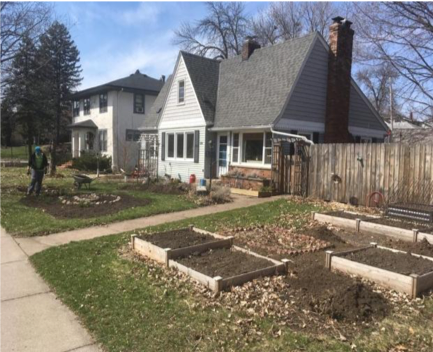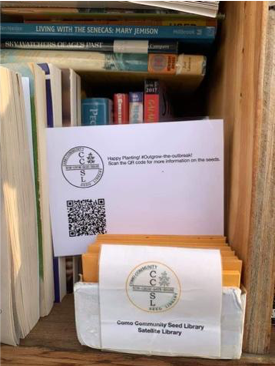Applying Rock Dust to Croplands Could Absorb up to 2 Billion Tonnes of CO2 from the Atmosphere, Research Shows
- Major new study shows adding rock dust to farmland could remove carbon dioxide (CO2) equivalent to more than the current total emissions from global aviation and shipping combined – or around half of Europe’s current total emissions
- Research identifies the nation-by-nation potential for CO2 drawdown, as well as the costs and the engineering challenges involved
- Findings reveal the world’s highest emitters (China, India and the US) also have the greatest potential to remove CO2 from the atmosphere using this method
- Scientists suggest unused materials from mining and the construction industry could be used to help soils remove CO2 from the atmosphere
Adding crushed rock dust to farmland could draw down up to two billion tonnes of carbon dioxide (CO2) from the air per year and help meet key global climate targets, according to a major new study led by the University of Sheffield.
The technique, known as enhanced rock weathering, involves spreading finely crushed basalt, a natural volcanic rock, on fields to boost the soil’s ability to extract CO2 from the air.
In the first nation-by-nation assessment, published in Nature, scientists have demonstrated the method’s potential for carbon drawdown by major economies, and identified the costs and engineering challenges of scaling up the approach to help meet ambitious global CO2 removal targets. The research was led by experts at the University of Sheffield’s Leverhulme Centre for Climate Change Mitigation, and the University’s Energy Institute.
Meeting the Paris Agreement’s goal of limiting global heating to below 2C above pre-industrial levels requires drastic cuts in emissions, as well as the active removal of between two and 10 billion tonnes of CO2 from the atmosphere each year to achieve net-zero emissions by 2050. This new research provides a detailed initial assessment of enhanced rock weathering, a large-scale CO2 removal strategy that could make a major contribution to this effort.
The authors’ detailed analysis captures some of the uncertainties in enhanced weathering CO2 drawdown calculations and, at the same time, identifies the additional areas of uncertainty that future work needs to address specifically through large-scale field trials.
The study showed that China, the United States and India – the highest fossil fuel CO2 emitters – have the highest potential for CO2 drawdown using rock dust on croplands. Together, these countries have the potential to remove approximately 1 billion tonnes of CO2 from the atmosphere, at a cost comparable to that of other proposed carbon dioxide removal strategies (US$80-180 per tonne of CO2).
Indonesia and Brazil, whose CO2 emissions are 10-20 times lower than the US and China, were also found to have relatively high CO2 removal potential due to their extensive agricultural lands, and climates accelerating the efficiency of rock weathering.
The scientists suggest that meeting the demand for rock dust to undertake large-scale CO2 drawdown might be achieved by using stockpiles of silicate rock dust left over from the mining industry, and are calling for governments to develop national inventories of these materials.
Calcium-rich silicate by-products of iron and steel manufacturing, as well as waste cement from construction and demolition, could also be processed and used in this way, improving the sustainability of these industries. These materials are usually recycled as low value aggregate, stockpiled at production sites or disposed of in landfills. China and India could supply the rock dust necessary for large-scale CO2 drawdown with their croplands using entirely recycled materials in the coming decades.
The technique would be straightforward to implement for farmers, who already tend to add agricultural lime to their soils. The researchers are calling for policy innovation that could support multiple UN Sustainable Development Goals using this technology. Government incentives to encourage agricultural application of rock dust could improve soil and farm livelihoods, as well as reduce CO2, potentially benefiting the world’s 2.5 billion smallholders and reducing poverty and hunger.
Professor David Beerling, Director of the Leverhulme Centre for Climate Change Mitigation at the University of Sheffield and lead author of the study, said: “Carbon dioxide drawdown strategies that can scale up and are compatible with existing land uses are urgently required to combat climate change, alongside deep and sustained emissions cuts.
“Spreading rock dust on agricultural land is a straightforward, practical CO2 drawdown approach with the potential to boost soil health and food production. Our analyses reveal the big emitting nations – China, the US, India – have the greatest potential to do this, emphasising their need to step up to the challenge. Large-scale Research Development and Demonstration programmes, similar to those being pioneered by our Leverhulme Centre, are needed to evaluate the efficacy of this technology in the field.”
Professor Steven Banwart, a partner in the study and Director of the Global Food and Environment Institute, said: “The practice of spreading crushed rock to improve soil pH is commonplace in many agricultural regions worldwide. The technology and infrastructure already exist to adapt these practices to utilise basalt rock dust. This offers a potentially rapid transition in agricultural practices to help capture CO2 at large scale.”
Professor James Hansen, a partner in the study and Director of the Climate Science, Awareness and Solutions Program at Columbia University’s Earth Institute, said: “We have passed the safe level of greenhouse gases. Cutting fossil fuel emissions is crucial, but we must also extract atmospheric CO2 with safe, secure and scalable carbon dioxide removal strategies to bend the global CO2 curve and limit future climate change. The advantage of CO2 removal with crushed silicate rocks is that it could restore deteriorating top-soils, which underpin food security for billions of people, thereby incentivising deployment.”
Professor Nick Pidgeon, a partner in the study and Director of the Understanding Risk Group at Cardiff University, said: “Greenhouse gas removal may well become necessary as we approach 2050, but we should not forget that it also raises profound ethical questions regarding our relationship with the natural environment. Its development should therefore be accompanied by the widest possible public debate as to potential risks and benefits.”
Ends
Contact
Sophie Armour, Media & PR Officer at the University of Sheffield: 07751 400 287 / 0114 222 3687 / sophie.armour@sheffield.ac.uk
Notes
Embargoed study available here: https://drive.google.com/file/d/1m2zUuQMTd_KeJwH9wcNT8jHukHDOKKAs/view?usp=sharing
FAQs on carbon drawdown with enhanced weathering developed by the Leverhulme Centre for Climate Change Mitigation are available here: https://lc3m.org/faqs/
The University of Sheffield
With almost 29,000 of the brightest students from over 140 countries, learning alongside over 1,200 of the best academics from across the globe, the University of Sheffield is one of the world’s leading universities.
A member of the UK’s prestigious Russell Group of leading research-led institutions, Sheffield offers world-class teaching and research excellence across a wide range of disciplines.
Unified by the power of discovery and understanding, staff and students at the university are committed to finding new ways to transform the world we live in.
Sheffield is the only university to feature in The Sunday Times 100 Best Not-For-Profit Organisations to Work For 2018 and for the last eight years has been ranked in the top five UK universities for Student Satisfaction by Times Higher Education.
Sheffield has six Nobel Prize winners among former staff and students and its alumni go on to hold positions of great responsibility and influence all over the world, making significant contributions in their chosen fields.
Global research partners and clients include Boeing, Rolls-Royce, Unilever, AstraZeneca, Glaxo SmithKline, Siemens and Airbus, as well as many UK and overseas government agencies and charitable foundations.
About the Leverhulme Trust
The Leverhulme Trust was established by the Will of William Hesketh Lever, the founder of Lever Brothers. Since 1925 the Trust has provided grants and scholarships for research and education.
Today, it is one of the largest all-subject providers of research funding in the UK, currently distributing £100 million each year. The Leverhulme Centre for Climate Change Mitigation at the University of Sheffield is part of a network of seven Leverhulme Trust research centres based in universities throughout the UK.
For more information about the Trust, please visit www.leverhulme.ac.uk and follow the Trust on Twitter @LeverhulmeTrust







